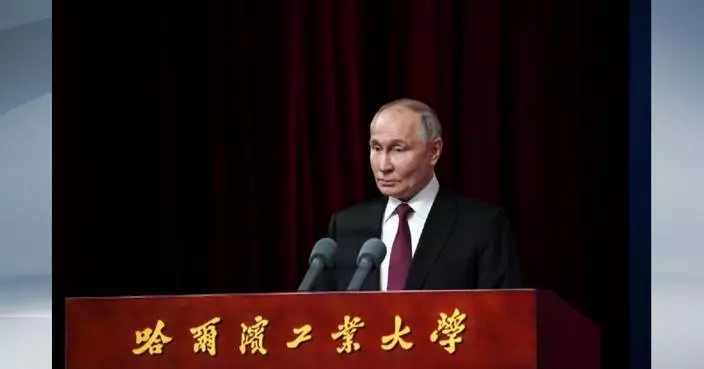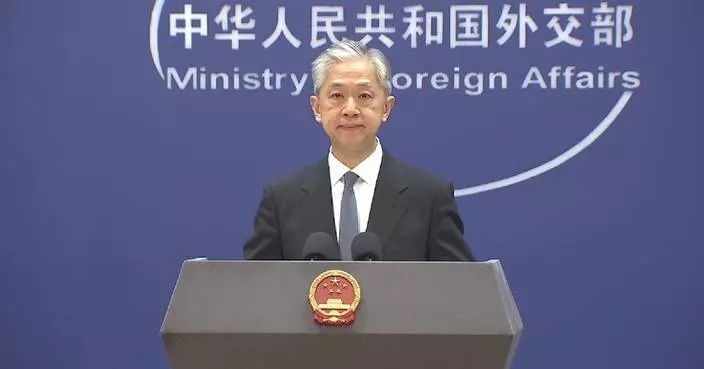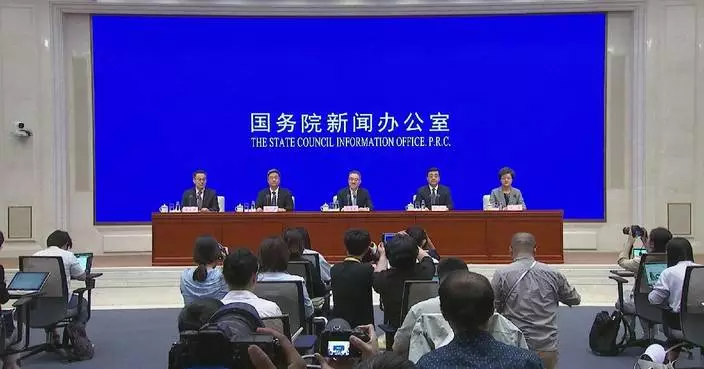The rapid advancement of artificial intelligence (AI) technology has brought about a surge of innovation in the media industry, with the rise of large-scale AI models playing a pivotal role in transforming both information analysis and content production.
In the realm of information analysis, these AI models are proving to be powerful tools for media professionals grappling with the challenges of content curation and audience engagement.
One intelligent public opinion analysis platform, for example, can aggregate and analyze nearly 90 days' worth of online data, not only identifying the hottest topics but also forecasting future dissemination patterns.
"After filtering information by volume, region, media type and content category, our overall communication analysis list below will expand its data share on each platform. Additionally, we provide a unique sentiment index, represented by a line chart that reflects the overall sentiment," explained Li Xu, an analyst at gsdata.cn.
Beyond simply extracting and categorizing key insights, the AI models can also learn from audience comments and reactions, automatically tagging content with sentiment attributes. The platform claims an accuracy rate of 70-80 percent in this sentiment analysis, with the remaining cases manually corrected.
"Behind this, we have a strong team of skilled AI algorithm engineers providing support. First and foremost, we require massive datasets that are meticulously labeled and processed. With accurate labels, our unique algorithms enable us to analyze this extensive data and derive the results we desire," said Lang Qingping, CEO of gsdata.cn.
The application of AI in the media industry extends beyond information analysis, with large language models also playing a pivotal role in enhancing the video production workflow, particularly for short-form content creators.
These AI-powered systems can intelligently assemble footage, adjust pacing, and even recommend background music - all based on a comprehensive understanding of different content formats like advertisements and short videos. Content creators can then build upon this foundation, swapping out the music or fine-tuning the details, significantly reducing the time-consuming manual work.
"The large model can carry out comprehensive and multi-modal content understanding for each material, and finally combine with certain editing software to complete this function. It can watch all the material at once, which is faster," said said Xu Nan, general manager of the AI R and D center at Zhongke Wenge.
According to the responsible person, this large model has been trained on various styles of videos available on online platforms. It is capable of distinguishing different types of tasks, such as advertisements and short videos, and providing corresponding editing suggestions.
Currently, AI editing is primarily used for creating short videos within two minutes, aiming to enhance the efficiency of basic tasks.
Furthermore, AI technology is being harnessed for the creation of digital anchors, with the ability to replicate an individual's voice characteristics and lip movements, generating strikingly lifelike virtual presenters. These automated broadcasting solutions are gradually being adopted by both traditional and online media outlets.
At a company specializing in digital human creation, a client's video capture session for their digital presenter was underway. The setup was simple: a green screen, a camera, and a few lights, resembling a typical photo studio.
The process was remarkably straightforward, requiring only ten minutes of casual conversation in front of the camera.
"The generation of digital people is actually very simple, roughly divided into two steps. The first step is to 'clone' your image, and the second step is to 'clone' your voice. We only need to collect some of your video footage," said Li Bin, senior director of Digital Human Products at SenseTime, a fast-growing technology company in China.
Through a specific training process, the model can discern the timbre and pronunciation characteristics of the 10-minute video and achieve a high level of mouth shape matching. With approximately three days of training, it can replicate the same characteristics in any given sentence content.
With a well-developed digital person, users can simply input text to drive it to speak the corresponding content, regardless of multiple languages.
"Now that we have integrated the large-scale model, it enables us to create more interactive digital personas. For instance, they can answer questions based on the desired character, making the digital person more closely resemble a real individual in the future," said Li.
However, the rapid advancement of AI has also given rise to concerns about ethical and regulatory challenges. Issues like unauthorized use of celebrity likenesses, "reviving" deceased public figures for views, and leveraging "AI face-swapping" for fraudulent purposes have drawn significant attention.
How to effectively mitigate those potential social risks and regulate the use of AI technology has become the focus of the industry.
In the corporate showroom of SenseTime, the authorized AI digital human representation of the late Qian Xuesen, a founder of China's space industry, was displayed. The digital figure wore a smiling face and warmly spoke about the spirit of space exploration.
Li Xingye, vice president of Digital Entertainment Division of Sensetime, shared about obtaining the necessary authorization for this representation.
"Last year, we received strong support from the China Space Foundation and obtained authorization from Mr. Qian Xuesen's son, Mr. Qian Yonggang. If Mr. Qian Xuesen were still alive, we would need to obtain his personal authorization and certification. If not, we need to seek authorization from his authorized representative or guardian. Currently, these short films are primarily used for public welfare purposes, aiming to publicize the development of our national science and technology," said Li. AI technology is neutral, but responsible use and ensuring authenticity are crucial in the media industry.
In China's first AI regulation, the "Interim Regulation on the Management of Generative Artificial Intelligence (AI) Services," which came into effect last August, provisions such as the fourth and seventh articles are specifically related to ensuring "authenticity."
As the media industry continues to harness the transformative power of AI, striking the right balance between innovation and compliance will be crucial.
Experts call for prudent policies that safeguard individual privacy, intellectual property, and national security, while enabling the responsible development of these cutting-edge technologies.

AI-powered systems driving media transformation via enhanced content creation capabilities









